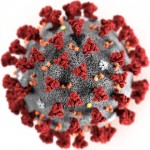Coronavirus disease 2019 (COVID-19) is increasing rapidly among young adults in the US.1 Often described as a disease affecting older adults, to our knowledge, few studies have included younger patients to better understand their anticipated clinical trajectory. We investigated the clinical profile and outcomes of 3222 young adults (defined by the US Census as age 18-34 years) who required hospitalization for COVID-19 in the US.
Young adults age 18 to 34 years with the International Statistical Classification of Diseases and Related Health Problems, Tenth Revision (ICD-10) code U07.1 (COVID-19, virus identified) discharged between April 1 and June 30, 2020, were identified in the Premier Healthcare Database, a hospital-based, all-payer database including 1030 US hospitals and health care systems and more than 8 million annual inpatient admissions.2,3 Pregnant young adults (n = 1644) were excluded because many were admitted for childbirth and not for COVID-19 infection. Only a patient’s first hospitalization for COVID-19 was considered.
Comorbidities and outcomes during COVID-19 hospitalization were defined using diagnosis, procedure, or billing ICD-10 codes. Intensive care utilization was defined by a billing code for intensive care unit room or daily ventilator management. Independent factors associated with the composite outcome of mechanical ventilation or death were identified by multivariable logistic regression. Race and ethnicity were reported by participating hospitals.
Data were collected and deidentified by Premier and transferred to and analyzed at Brigham and Women’s Hospital using Stata, version 14 (StataCorp). The Mass General Brigham institutional review board approved the study protocol; the requirement for informed consent was waived because of the deidentified nature of the data. A 2-sided P value of <.05 was considered significant.
Among 780 969 adults discharged between April 1, 2020, and June 30, 2020, 63 103 (8.1%) had the ICD-10 code for COVID-19, of whom 3222 (5%) were nonpregnant young adults (age 18-34 years) admitted to 419 US hospitals. The mean (SD) age of this population was 28.3 (4.4) years; 1849 (57.6%) were men and 1838 (57.0%) were Black or Hispanic. Overall, 1187 (36.8%) had obesity, 789 (24.5%) morbid obesity, 588 (18.2%) diabetes, and 519 (16.1%) hypertension (Table).
During hospitalization, 684 patients (21%) required intensive care, 331 (10%) required mechanical ventilation, and 88 (2.7%) died. Vasopressors or inotropes were used for 217 patients (7%), central venous catheters for 283 (9%), and arterial catheters for 192 (6%). The median length of stay was 4 days (interquartile range, 2-7 days). Among those who survived hospitalization, 99 (3%) were discharged to a postacute care facility.
Morbid obesity (adjusted odds ratio [OR], 2.30; 95% CI, 1.77-2.98; vs no obesity; P < .001) and hypertension (adjusted OR, 2.36; 95% CI, 1.79-3.12; P < .001) were common and in addition to male sex (adjusted OR, 1.53; 95% CI, 1.20-1.95; P = .001) were associated with greater risk of death or mechanical ventilation. Odds of death or mechanical ventilation did not vary significantly with race and ethnicity. Morbid obesity was present in 140 patients (41%) who died or required ventilation. Diabetes was associated with increased risk of this outcome in univariable analysis (OR, 1.82; 95% CI, 1.41-2.36; P < .001) but did not reach statistical significance after adjustment (adjusted OR, 1.31; 95% CI, 0.99-1.73; P = .06). Patients with multiple risk factors (morbid obesity, hypertension, and diabetes) faced risks similar to 8862 middle-aged (age 35-64 years) nonpregnant adults with COVID-19 infection without these conditions (Figure).
Young adults age 18 to 34 years hospitalized with COVID-19 experienced substantial rates of adverse outcomes: 21% required intensive care, 10% required mechanical ventilation, and 2.7% died. This in-hospital mortality rate is lower than that reported for older adults with COVID-19, but approximately double that of young adults with acute myocardial infarction.4 Morbid obesity, hypertension, and diabetes were common and associated with greater risks of adverse events. Young adults with more than 1 of these conditions faced risks comparable with those observed in middle-aged adults without them. More than half of these patients requiring hospitalization were Black or Hispanic, consistent with prior findings of disproportionate illness severity in these demographic groups.5,6
Limitations of this study included defining COVID-19 infection and comorbidities by ICD-10 codes, which may be subject to misclassification, and variable reporting of race and ethnicity across hospitals. The definition of COVID-19 infection did not require microbiological confirmation. Given the sharply rising rates of COVID-19 infection in young adults, these findings underscore the importance of infection prevention measures in this age group.
Accepted for Publication: August 14, 2020.
Corresponding Author: Scott D. Solomon, MD, Cardiovascular Division, Brigham and Women’s Hospital, 75 Francis St, Boston, MA 02115 (ssolomon@bwh.harvard.edu).
Published Online: September 9, 2020. doi:10.1001/jamainternmed.2020.5313
Author Contributions: Dr Solomon had full access to all of the data in the study and takes responsibility for the integrity of the data and the accuracy of the data analysis. Drs Cunningham and Vaduganathan contributed equally as co–first authors.
Concept and design: Cunningham, Jering, Bhatt, Solomon.
Acquisition, analysis, or interpretation of data: Cunningham, Vaduganathan, Claggett, Jering, Rosenthal, Solomon.
Drafting of the manuscript: Cunningham, Vaduganathan.
Critical revision of the manuscript for important intellectual content: All authors.
Statistical analysis: Cunningham, Claggett, Jering, Rosenthal, Solomon.
Obtained funding: Solomon.
Administrative, technical, or material support: Jering.
Supervision: Solomon.
Conflict of Interest Disclosures: Dr Cunningham reported grants from the National Heart, Lung, and Blood Institute (T32HL094301) during the conduct of the study. Dr Vaduganathan reported grants from Harvard Catalyst, grants and personal fees from Amgen, and personal fees from AstraZeneca, Baxter HealthCare, Bayer AG, Boehringer Ingelheim, Cytokinetics, and Relypsa outside the submitted work. Dr Claggett reported personal fees from Amgen, Boehringer Ingelheim, Corvia, MyoKardia, and Novartis outside the submitted work. Dr Rosenthal is an employee of Premier Inc, which curates the Premier Healthcare Database. Dr Bhatt reported speaking fees from Sanofi Pasteur and is supported by the Heart, Lung, and Blood Institute T32 postdoctoral training grant T32HL007604. Dr Solomon reported grants from Alnylam, Amgen, AstraZeneca, Bellerophon, Bayer, BMS, Celladon, Cytokinetics, Eidos, Gilead, GSK, Ionis, Lone Star Heart, Mesoblast, MyoKardia, Neurotronik, National Institutes of Health/National Heart, Lung, and Blood Institute, Novartis, Respicardia, Sanofi Pasteur, Theracos and personal fees from Akros, Alnylam, Amgen, Arena, AstraZeneca, Bayer, BMS, Cardior, Cardurion, Corvia, Cytokinetics, Daiichi-Sankyo, Gilead, GSK, Ironwood, Merck, Myokardia, Novartis, Roche, Takeda, Theracos, Quantum Genetics, Cardurion, AoBiome, Janssen, Cardiac Dimensions, Sanofi-Pasteur, Tenaya, Dinaqor, Tremeau, CellProThera, and Moderna outside the submitted work. No other disclosures were reported.
 Жизнь во время и после КоронаВируса
Жизнь во время и после КоронаВируса